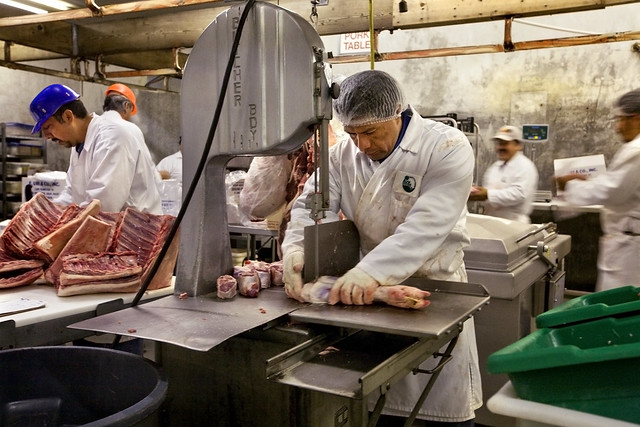
Image by Christiana Care, via Flickr Creative Commons.
Yesterday marked the first day of a period in US politics that was never supposed to happen – the deadline to prevent sequestration ran out, triggering through-the-board spending cuts of $85 billion dollars. This article (and the one-minute-video) gives a great overview of what stands behind it – basically, it was a bipartisan deal of threatening to cut the US budget non-selectively by 8% in order to lower the deficit – which was supposed to be so painful that it would force both sides to the negotiation table to seek a real solution. Well, after the Senate rejected the competing Democratic and Republican proposals to avert this self-created crisis, the budget cuts were signed into effect by President Obama. What does this mean for the country’s agricultural policy?
The US Department of Agriculture (USDA)’s budget is predicted to be slashed by $2 billion in the Fiscal Year 2013, after having already been reduced by $3 billion, or 12%, since 2010. Additional spending cuts will also apply to the budget of the Food and Drug Administration (FDA). This will result in real challenges – both for the food industry and for low-income consumers.
Some of the most immediate impacts would potentially place food safety at risk, as the Food and Drug Administration would be forced to conduct 2,100 fewer food safety inspections than normal. Also, these measures could delay the implementation of a new food safety law which instead required the agency to boost inspections in order to protect the public from unsafe food. According to FDA Commissioner Margaret Hamburg, the agency is experimenting with ways to cut expenses, including quicker inspections and potentially asking for a user fee by the food industry, though previous attempts at that had been squarely rejected.

Image by Carrie Cizauskas, via Flickr Creative Commons.
Furthermore, USDA’s Food Safety and Inspection Service might have to lay off their meat inspectors for 15 days in order to enact the necessary spending cuts. However, meat packing plants are by law required to have an inspector present at all times – which in effect means that meat plants might be shut down for up to 2 weeks (though the agency might spread the so-called furloughs over non-consecutive days to minimize the impact), costing the industry up to $10 billion in production and meaning that stores and restaurants could temporarily run short of meat, nudging prices up. Other food processing companies – up to 6,000, producing items such as frozen pizza, burritos and tamales – could be similarly affected.
This is not the worst yet, though. A major part of the USDA’s budget is in fact earmarked for food stamps and supplementary nutrition programs for low-income citizens, and has supplementary programs for mothers, babies and seniors in particular. Federally-assisted programs like Meals on Wheels would be able to serve 4 million fewer meals to seniors (for many of which these meals account for over 50% of daily food); and approximately 600,000 women, infants and children would be dropped from the Department of Agriculture’s Special Supplemental Nutrition Program from March through November, which is supposed to cut $543 million from its budget.
In addition, according to the Kansas Feed and Grain Association, 11,000 farmers would experience cuts in conservation technical and financial assistance; there would be 100 fewer research grants totaling about $60 million, and “furloughs and other reductions in the number of USDA personnel would limit the ability to provide program oversight, leading to potentially higher levels of erroneous payments and fraud.”
In conclusion, I would venture to agree with the commentator who calls the effect of these policies “Washington’s Hunger Games“. Clearly, the food assistance programs are not the only projects with targeted cuts – you can see this list furnished by the White House on how the sequester would affect middle-class families -, but it is a particularly dire step to take to prove your political standpoint if thousands of families are affected in their very real struggle to afford to put (healthy) food on the table.